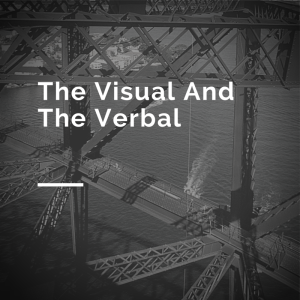The Visual And The Verbal by Alison Clarke
Click here to go to the films of the students’ presentations
‘Interdisciplinarity’ seems to be somewhat of a buzzword in academia at the moment, appearing prominently as part of collaborative projects and research proposals. But to what extent can we actually apply the concept and use it as a useful model in our own work and in our partnerships with other researchers? This question was the focus of ‘The Visual and the Verbal’, an AHRC-funded workshop organised by Professor Sharon Ruston that took place at the University of Lancaster on 20 May 2015. The day attracted some 14 PhD candidates from across the North West and beyond to share their thoughts on their projects and interdisciplinarity, particularly with regard to archival and visual material. This was an exciting opportunity to network with PhDs outside my own discipline and institution, and to see how our projects— although highly disparate at first glance—could overlap and offer new approaches to broaden and deepen our research. While it was somewhat nerve-wracking to speak in front of a camera, the experience of compressing the details of my PhD research into a five-minute presentation should certainly stand me in good stead in the future! The afternoon session was based in the Ruskin Library: a beautiful space, and one I had wanted to visit for some time. We were treated to a talk on the current exhibition by Director Stephen Wildman, before being allowed to handle some of the letters and drawings from the collection itself. The busy day ended, a little to my surprise, with a hands-on drawing session in which Gerald Davies from the Lancaster Institute for the Contemporary Arts encouraged us to look at an unknown object with fresh eyes. It was a pleasure to crack the spine of a brand-new notebook and, with the room absorbed in silent concentration, work to see the item and sketch down our impressions of it. A step, perhaps, towards the ideals of John Ruskin himself, who wrote in Volume III of Modern Painters that ‘the greatest thing a human soul ever does in this world is to see something, and tell what it saw in a plain way’. Having attended this workshop, I am now keen to think further about issues regarding the tension between visual and verbal representations, and how these questions apply to my own work. My PhD project currently focuses on Agnew’s, a British firm of art dealers, and the company’s reputation for expertise and connoisseurship in the period 1850-1920. As my research makes extensive use of archival material such as diaries, I will now be more aware of issues such as the physicality of these sources. For example, what can we tell from the handwriting, annotations and deletions, the layout of the writing on the page, and any drawings or cuttings added to the volume? Perhaps interdisciplinarity no longer seems quite such a buzzword after all. Alison Clarke, Collaborative Doctoral Partnership (CDP) PhD candidate at the University of Liverpool and the National Gallery


0 Comments